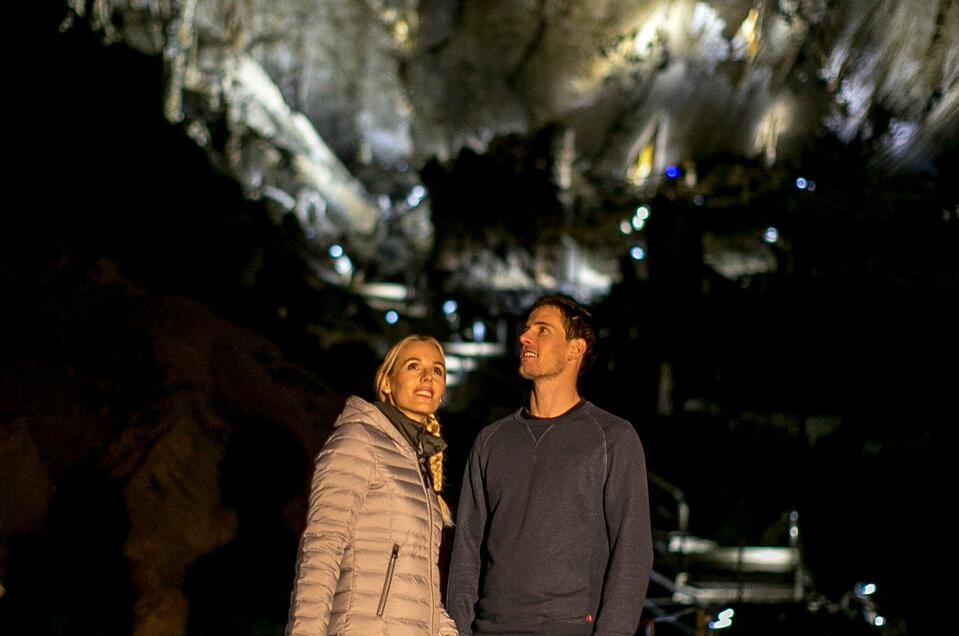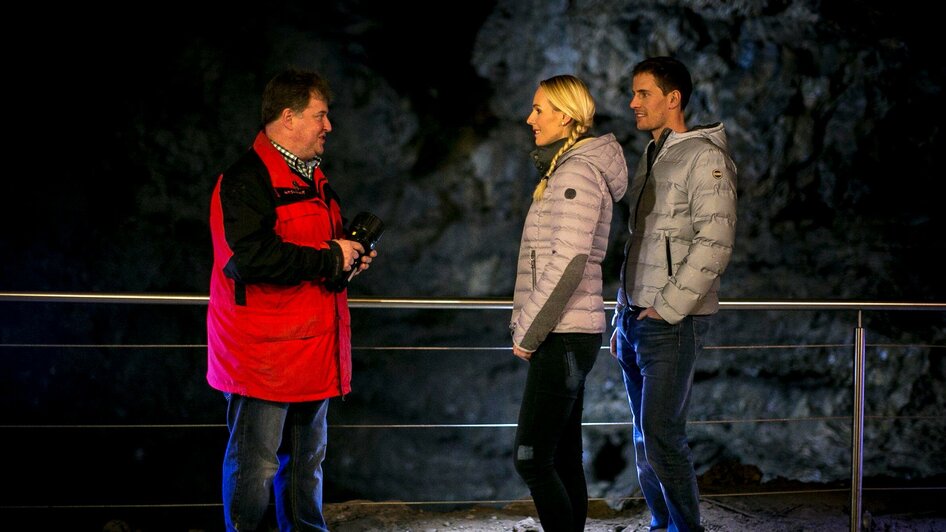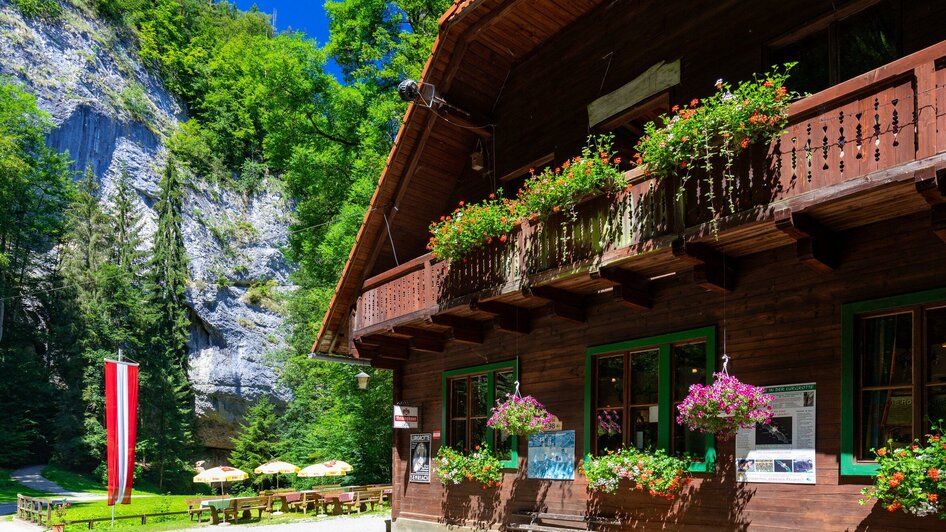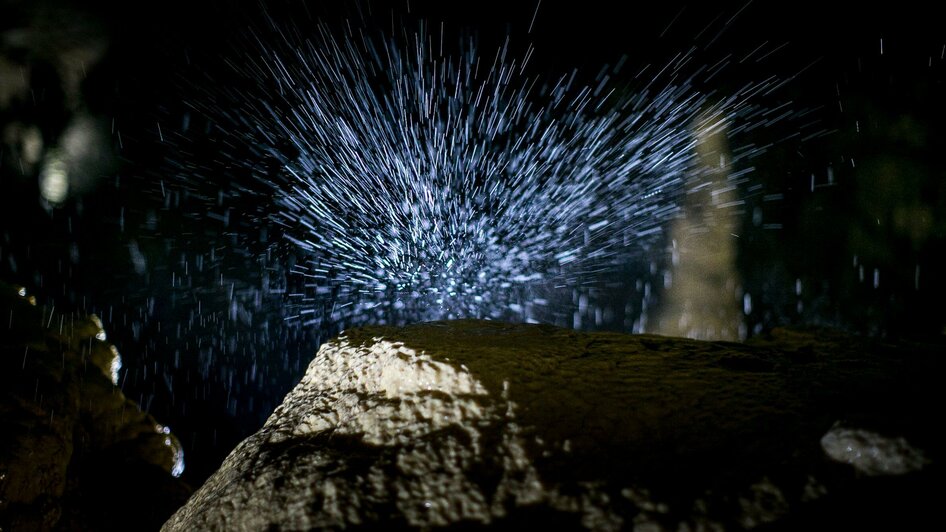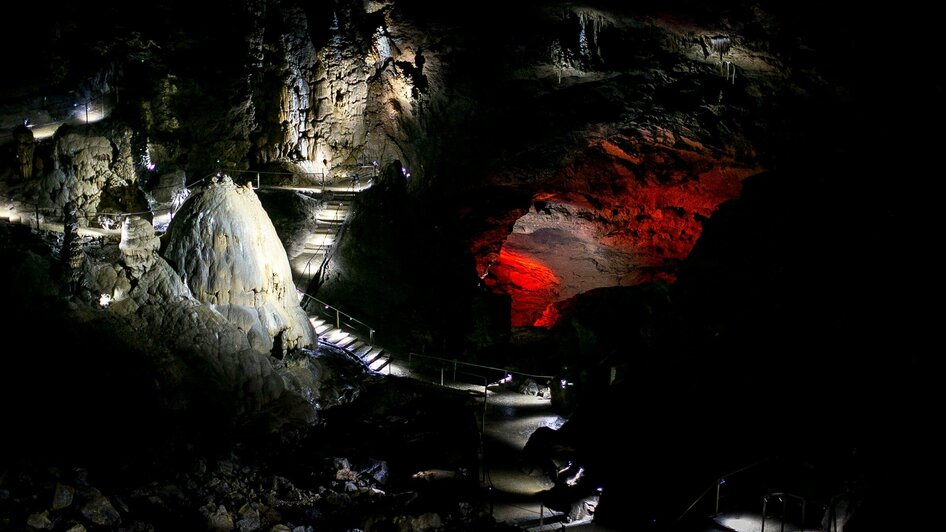Lurgrotte Semriach
SemriachStalactite from the ceiling, stalagmite on the ground. This mnemonic can help you to identify the wonderful stone formations at the Lurgrotte, Austria’s largest dripstone cave.
Stalactites hang down, stalagmites stand cheerfully. This mnemonic helps to distinguish the wonderful stalactite formations of the Lurgrotte. It is Austria's largest stalactite cave, where for millions of years limestone deposits have formed works of art as enchantingly fragile as they are powerful, bearing imaginative names such as Prince, Giant or Easter Candelabra. A light show also makes the largest stalactite in the world shine in a whole new way. From Peggau or Semriach you can dive into this fascinating cave world accompanied by competent guides.
The first person to venture into the depths of the Lurgrotte was the Italian speleologist Max Brunello. He penetrated as far as the Great Dome in 1894. This 120-meter-long, 80-meter-wide and 40-meter-high room, which can be reached from Semriach, is one of the largest cave domes in Central Europe and is especially highlighted by light and sound effects during guided tours. Starting from Semriach, you can penetrate the magical world of stalactites for about two kilometers and, among other things, marvel at the 40-ton "Giant", probably the most powerful free-hanging stalactite in the world. Where the Lurbach, whose winding paths through the mountain no one knows exactly, comes to the surface again, lies the village of Peggau. From here you can reach the effectively illuminated rain grotto and the stately "Prinz". As findings prove, cave bears and, about 50,000 years ago, even Neanderthals once sought shelter in the vestibules of the Lurgrotte. Whether they, like today's visitors, appreciated the constant temperature of +10° C and the high humidity of 97-98%, which is particularly beneficial for the respiratory tract, has not been handed down.
If you are looking for exciting cave experiences, you will find them on the winter adventure tours from Peggau. You can explore the cave system for up to seven hours, sometimes crawling, sometimes wading waist-deep in the water, and marvel at the hidden artistic stalactites and the shaping power of the water. Along the way, you will encounter some light-shy cave dwellers, such as the cave olm or the horseshoe bat, a bat species that uses the Lurgrotte as its winter quarters. By the way: During thunderstorms, the water level in the cave can rise abruptly. Today there is a modern warning system. In 1894, however, seven experienced speleologists were trapped in the Lurgrotte by a surprising flood and were rescued only after nine days. Another flood in 1975 destroyed the connecting path between Peggau and Semriach Lurgrotte, which has not been accessible since. Click here for opening hours.
